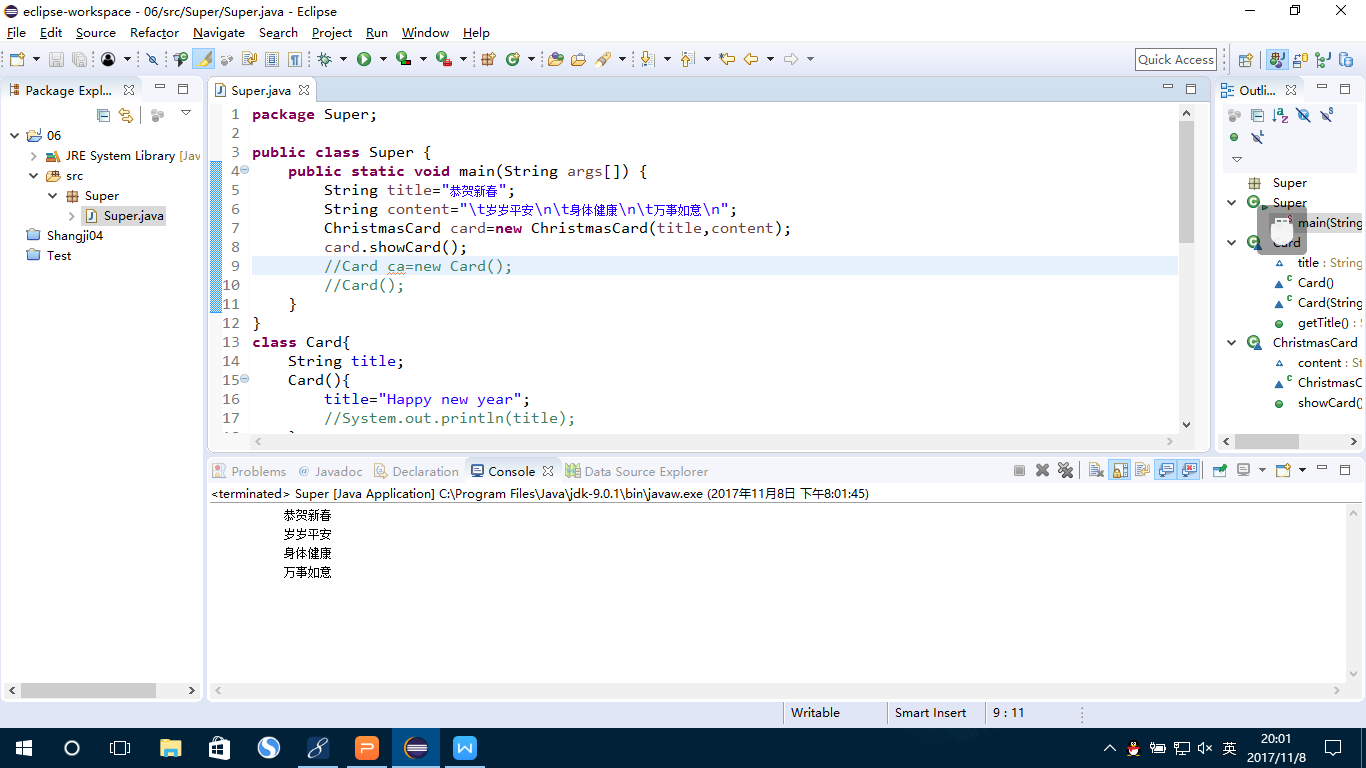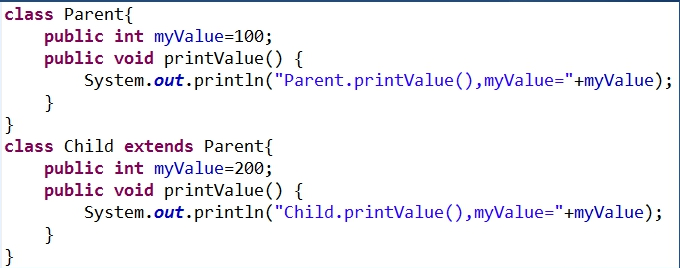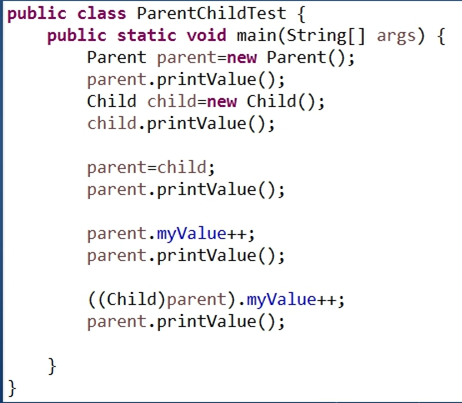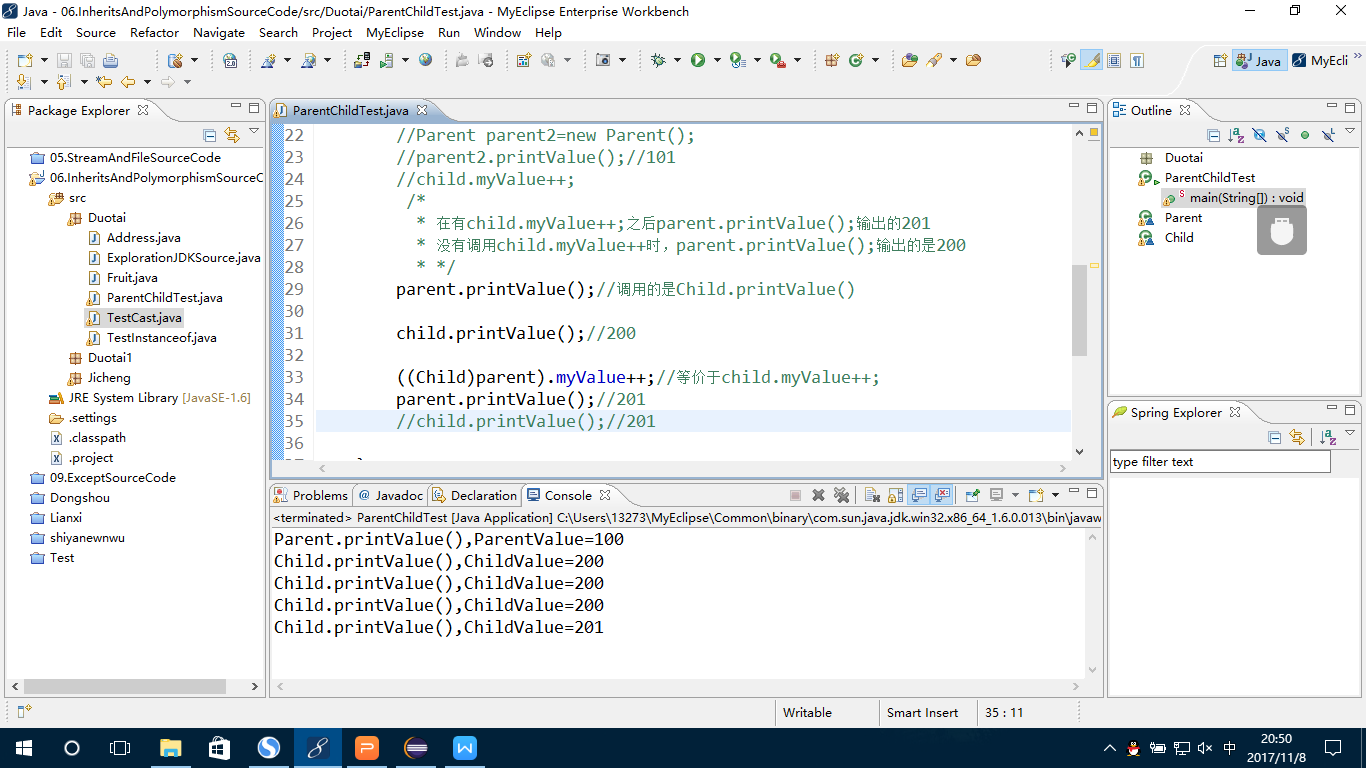在子类中,若要调用父类中被覆盖的方法,可以使用super关键字。
源代码
package Super;
public class Super {
public static void main(String args[]) {
String title="恭贺新春";
String content=" 岁岁平安 身体健康 万事如意 ";
ChristmasCard card=new ChristmasCard(title,content);
card.showCard();
//Card ca=new Card();
//Card();
}
}
class Card{
String title;
Card(){
title="Happy new year";
//System.out.println(title);
}
Card(String title){
this.title=title;
}
public String getTitle() {
return title;
}
}
class ChristmasCard extends Card
{
String content;
ChristmasCard(String title,String content){
//super();
super(title);//用super调用父类的Card(title);
this.content=content;
}
public void showCard()
{
System.out.println(" "+getTitle());
System.out.printf("%s",content);
}
}
运行结果

类型转换
源代码
package Duotai;
class Mammal{}
class Dog extends Mammal {}
class Cat extends Mammal{}
public class TestCast
{
public static void main(String args[])
{
Mammal m = null;
Dog d=new Dog();
Cat c=new Cat();
//Mammal m=new Mammal();
m=d;//可以直接将子类对象付给父类
//d=m;//不能将父类对象付给子类
d=(Dog)m;//父类强制转换成子类
//d=c;//子类直接不能转换
//m=c;
c=(Cat)m;//如果没有m=c;就不能将m转换为cat类型
}
}
运行结果

运行以下代码


猜测结果
100
200
200
200
201
源代码
package Duotai;
//import Duotai1.Parent;
public class ParentChildTest {
public static void main(String[] args) {
Parent parent=new Parent();
/*Parent parent2=new Parent();
parent2=parent;*/
parent.printValue();//100
Child child=new Child();
child.printValue();//200
parent=child;
/*
* 将parent类中的myValue值设定为static
* 然后执行parent.myValue++;
* 创建新父类parent2,调用printValue();函数
* 最终可以看出parent中的 myValue值变为101
* */
parent.myValue++;//将父类的myValue进行了+1操作
Parent parent2=new Parent();
parent2.printValue();//101
//child.myValue++;
/*
* 在有child.myValue++;之后parent.printValue();输出的201
* 没有调用child.myValue++时,parent.printValue();输出的是200
* */
parent.printValue();//调用的是Child.printValue()
child.printValue();//200
((Child)parent).myValue++;//等价于child.myValue++;
parent.printValue();//201
child.printValue();//201
}
}
class Parent{
public static int myValue=100;
public void printValue() {
System.out.println("Parent.printValue(),ParentValue="+myValue);
}
}
class Child extends Parent{
public int myValue=200;
public void printValue() {
System.out.println("Child.printValue(),ChildValue="+myValue);
}
}
运行结果

(1)当子类与父类拥有一样的方法,并且让一个父类变量引用一个子类对象时,到底调用哪个方法,由对象自己的“真实”类型所决定,这就是说:对象是子类型的,它就调用子类型的方法,是父类型的,它就调用父类型的方法。
(2)这个特性实际上就是面向对象“多态”特性的具体表现。
(3)如果子类与父类有相同的字段,则子类中的字段会代替或隐藏父类的字段,子类方法中访问的是子类中的字段(而不是父类中的字段)。如果子类方法确实想访问父类中被隐藏的同名字段,可以用super关键字来访问它。
(4)如果子类被当作父类使用,则通过子类访问的字段是父类的!